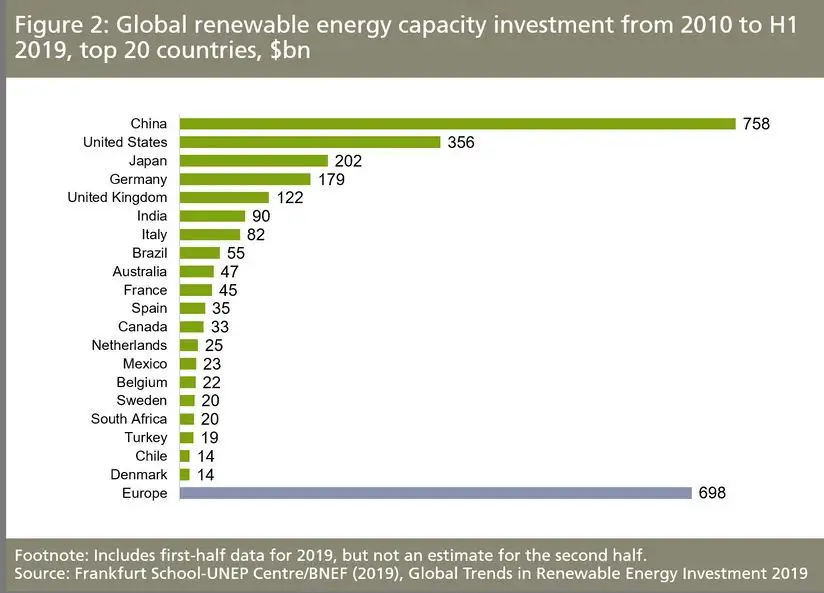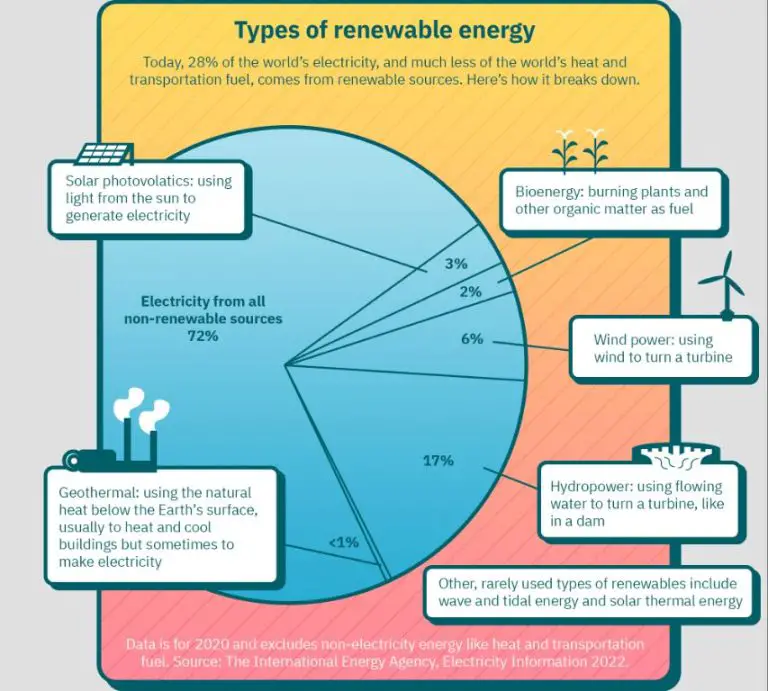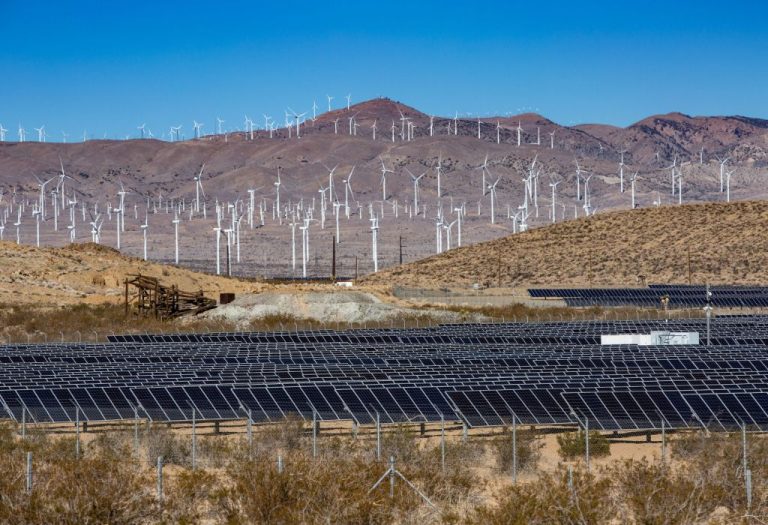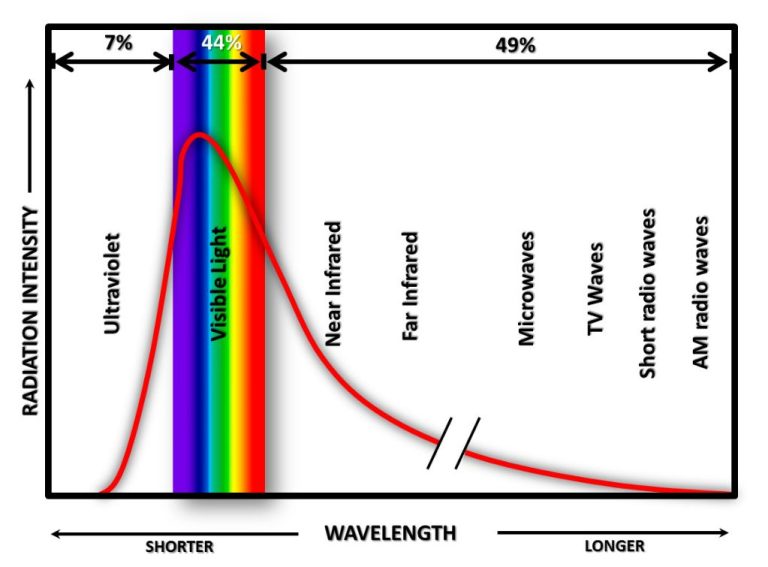Which Is Non Exhaustible Resources?
Definition of Non-Exhaustible Resources
Non-exhaustible resources, also known as renewable resources, are sources of energy that are available indefinitely with minimal depletion over time. Unlike finite resources such as oil, gas and coal which will eventually run out, non-exhaustible resources are naturally replenished and can be harnessed essentially forever.
The defining quality of a non-exhaustible resource is that it is not depleted when used. This replenishment occurs naturally over relatively short time spans. Examples include solar energy from the sun, wind energy, geothermal energy from earth’s core, and hydro power from flowing water. These resources are considered renewable because their supply is not diminished despite ongoing and continuous usage.
With careful management and stewardship, renewable resources can meet humanity’s energy needs far into the future. Their inexhaustible nature makes them extremely valuable in working towards energy sustainability and reducing dependence on finite fossil fuels.
Examples of Non-Exhaustible Resources
Some of the most common and widely used non-exhaustible resources include:
Solar Energy
Solar energy comes directly from the sun in the form of radiation. It can be harnessed in different ways, such as through solar panels that convert sunlight into electricity, or through solar thermal collectors that heat water.
Wind Energy
Wind energy is derived from airflows and captured by wind turbines that convert kinetic energy from the wind into mechanical power or electricity. Wind power is considered a renewable energy source.
Tidal Energy
Tidal energy utilizes the rise and fall of ocean tides to generate electricity through tidal turbines. Tidal power generation takes advantage of the massive potential energy available in oceans.
Geothermal Energy
Geothermal energy taps into the natural heat from the earth’s core to produce renewable energy. It can refer to geothermal electricity generation or direct applications of geothermal heating.
Difference from Exhaustible Resources
The key difference between non-exhaustible and exhaustible resources is that exhaustible resources can be depleted or run out, while non-exhaustible resources are renewable and cannot be depleted. Exhaustible resources like fossil fuels, minerals, and metals are finite and limited in supply. Once they are extracted and used up, they are gone. On the other hand, non-exhaustible resources like solar, wind, and tidal energy can be continually replenished and reused. While the supply of sunlight, wind, and tides is vast, the rate at which they can be harnessed depends on the capacity built to capture them. But the sources themselves will persist indefinitely, making them an inexhaustible resource if properly leveraged.
Advantages of Non-Exhaustible Resources
Non-exhaustible resources offer several key advantages over traditional fossil fuels and exhaustible energy sources:
Environmentally Sustainable
Non-exhaustible resources like solar, wind, geothermal and hydro power do not require the burning of fossil fuels. This makes them more environmentally sustainable over the long-term. They produce little to no greenhouse gas emissions, helping mitigate climate change.
Reduces Reliance on Fossil Fuels
Shifting energy production to non-exhaustible sources reduces dependence on coal, oil and natural gas reserves that will eventually run out. This provides greater energy security and insulation from fossil fuel price shocks.
Reduces Environmental Impact
Unlike coal and oil extraction, non-exhaustible energy sources do not require intensive mining or drilling operations. This minimizes environmental degradation, habitat destruction and pollution associated with fossil fuel extraction.
Disadvantages of Non-Exhaustible Resources
While non-exhaustible resources offer many benefits, they also come with some drawbacks that should be considered:
High Upfront Costs
Developing non-exhaustible energy sources like solar, wind, tidal, and geothermal power requires major upfront investments. Building large-scale renewable energy projects necessitates purchasing land, procuring equipment, and constructing facilities which can cost billions of dollars.
Intermittent Availability
The availability of renewable resources depends on external factors. Solar power relies on sunny weather, wind power needs windy conditions, hydropower requires adequate water flows, and tidal power depends on high and low tides. This intermittency can make renewable energy less reliable than fossil fuels.
Limited Suitable Locations
Renewable energy projects need specific geographic conditions to operate optimally. For example, solar and wind farms work best in sunny, windy areas which limits suitable locations. Similarly, only certain areas have the right landscape and climate for hydropower dams and tidal energy capture.
Most Used Non-Exhaustible Resources
When examining which non-exhaustible resources are most utilized globally, three major renewable sources stand out: hydropower, wind power, and solar power.
Hydropower harnesses the energy from flowing water to generate electricity. Plants are often built along rivers or within dams to take advantage of the kinetic energy of moving water. Hydropower supplies 16% of the world’s electricity and is the most-used form of renewable energy. The top countries for hydro capacity are China, Brazil, Canada, the United States, and Russia.
Wind power utilizes the airflow through wind turbines to mechanically power generators. Wind energy capacity has expanded rapidly in recent decades to provide 5% of global electricity. The leaders in installed wind power are China, the United States, Germany, India, and Spain. Offshore wind farms are an important emerging segment.
Solar power converts energy from the sun into electricity through photovoltaics or concentrated solar plants. It accounts for 2% of global power but is the fastest growing renewable source. China, the United States, Japan, Germany, and India have the highest total solar capacity installed.
Together, hydropower, wind, and solar make up the most utilized non-exhaustible energy resources globally, with hydropower being the predominant leader.
Global Capacity and Usage

Non-exhaustible energy resources like solar, wind, tidal, and geothermal power have seen massive growth worldwide in installed capacity over the past decade. Total global renewable power capacity reached 2,799 GW by the end of 2019, up 12% from 2018. Solar power led capacity growth with a 20% increase, reaching 627 GW total capacity. Wind power capacity increased nearly 10% to 650 GW globally. Hydropower remains the largest renewable resource at 1,308 GW capacity.
The growth in renewable energy capacity is being driven by falling technology costs, supportive government policies, and increased competitiveness with fossil fuels. The Levelized Cost of Energy (LCOE) for renewables has declined steadily, making them cost competitive with coal and natural gas in many markets. As technology improves further and scale increases, renewables are expected to be consistently cheaper than fossil fuels globally by 2030.
China continues to lead in total installed renewable capacity, followed by the United States, Brazil, India, and Germany as the top 5. Europe and North America have generally stable and saturated growth, while developing economies in Asia and elsewhere are seeing rapid capacity expansion. Overall the share of renewables as part of the global energy mix reached over 26% by 2019. If growth continues at the current pace, renewables could supply up to 50% of the world’s electricity by 2050.
Future Outlook and Projections
The future outlook for non-exhaustible resources is generally very positive, with continued capacity expansion and increased usage expected across most types of renewable energy. With growing investment, technological improvements, and supportive governmental policies, renewables like solar, wind, hydropower and geothermal are poised for strong growth worldwide.
Global solar power capacity is projected to grow from around 600 GW in 2020 to over 8,500 GW by 2050. This over 14-fold increase will be driven by the continuing cost declines and efficiency improvements in photovoltaic panels, making solar power increasingly cost competitive. Government targets to increase the share of renewables in the energy mix will also boost growth.
The global wind power market is estimated to grow at around 10% annually over the next decade. Total wind capacity is expected to nearly double from around 720 GW in 2020 to over 1,400 GW by 2030. Growth will be driven by onshore wind farms as well as the rapid expansion of offshore wind farms, especially in Europe and Asia.
The global hydropower market is projected to see steady growth and capacity expansion in the coming decades, driven by the opportunities for new projects, especially in developing countries in Africa and Asia. Total hydro capacity is estimated to reach around 2,000 GW globally by 2050, up from around 1,300 GW in 2020.
Geothermal capacity is also expected to grow significantly, with projections for it to supply around 5% of global electricity by 2050, up from around 0.3% currently. This will require a major scale up in geothermal project development worldwide.
Overall, continued growth is expected across all major non-exhaustible resources like solar, wind, hydro and geothermal energy. With supportive policies, technological advances and falling prices, renewables are positioned to greatly expand their share of global energy production and consumption in the coming decades.
Policies Supporting Non-Exhaustible Resources
Governments around the world have implemented various policies and initiatives to support the development and adoption of non-exhaustible energy resources. These policies aim to accelerate the transition away from finite fossil fuels and toward renewable sources like solar, wind, hydro, and geothermal power.
Many governments provide direct financial incentives for renewable energy production and investment. These include tax credits, grants, and rebates to offset the upfront costs of building renewable generation facilities and installing systems for homes and businesses. Feed-in tariffs are used in some places to guarantee minimum prices per unit of renewable electricity fed into the grid.
Regulations also drive non-exhaustible energy adoption. Renewable portfolio standards require electric utilities to source a percentage of their power from renewable sources. Building codes increasingly mandate or encourage integration of technologies like solar panels. Phase-outs of fossil fuel power plants and bans on new ones also pave the way for cleaner energy.
Beyond financial carrots and regulatory sticks, many initiatives provide education, training, and research funding to grow renewable energy expertise and innovation. Governments finance renewable energy R&D, demonstration projects, and technology competitions to drive down costs. Workforce training helps build up a base of qualified workers to meet labor needs.
While policies vary across nations, states, and cities, they collectively demonstrate the priority that governments place on scaling up non-exhaustible resources worldwide. Ongoing policy support will be important to fully transition to an economy powered by renewable energy.
Conclusion
In summary, non-exhaustible resources are those that cannot be depleted, such as solar, wind and tidal energy. They play a crucial role in transitioning the world to a more sustainable future with clean energy. The main advantages of non-exhaustible resources are their renewability, abundance, and environmental friendliness compared to exhaustible resources like coal, oil and natural gas. While non-exhaustibles currently make up a small percentage of global energy production, their usage is rapidly increasing as costs continue to fall and supportive policies expand. Key non-exhaustible resources today include hydroelectric, solar photovoltaic, wind, geothermal and tidal power.
To mitigate climate change and build sustainable economies, it is vital that non-exhaustible resources continue displacing fossil fuels. This requires continued policy support and public/private investment in renewable infrastructure and technologies. The transition will bring both challenges and opportunities, but is essential for long-term environmental and economic prosperity. Overall, non-exhaustible resources have tremendous potential to supply the world’s growing energy needs in a clean and sustainable manner for generations to come.





